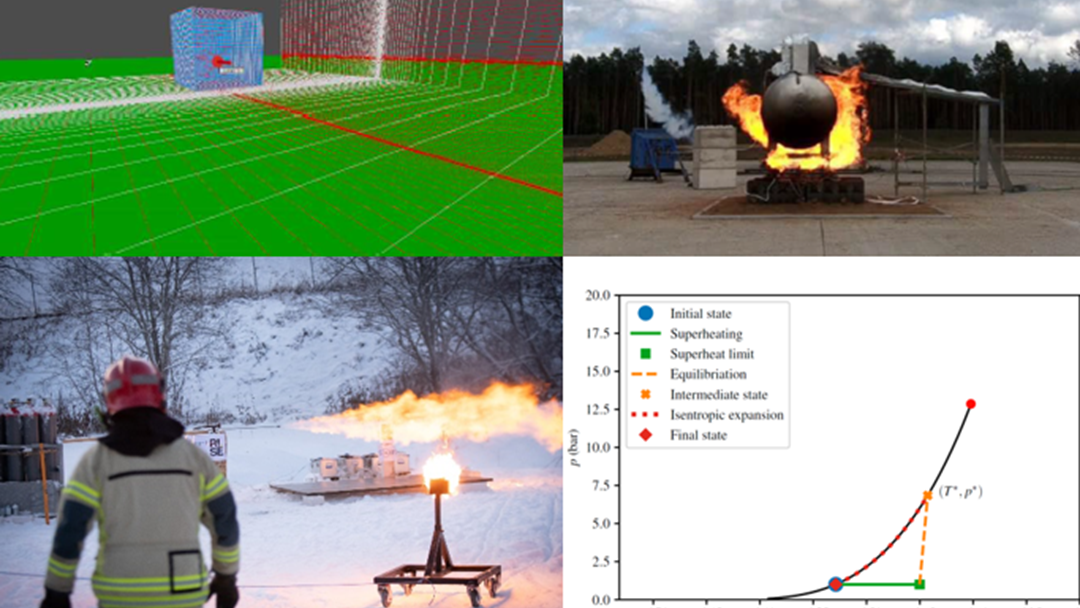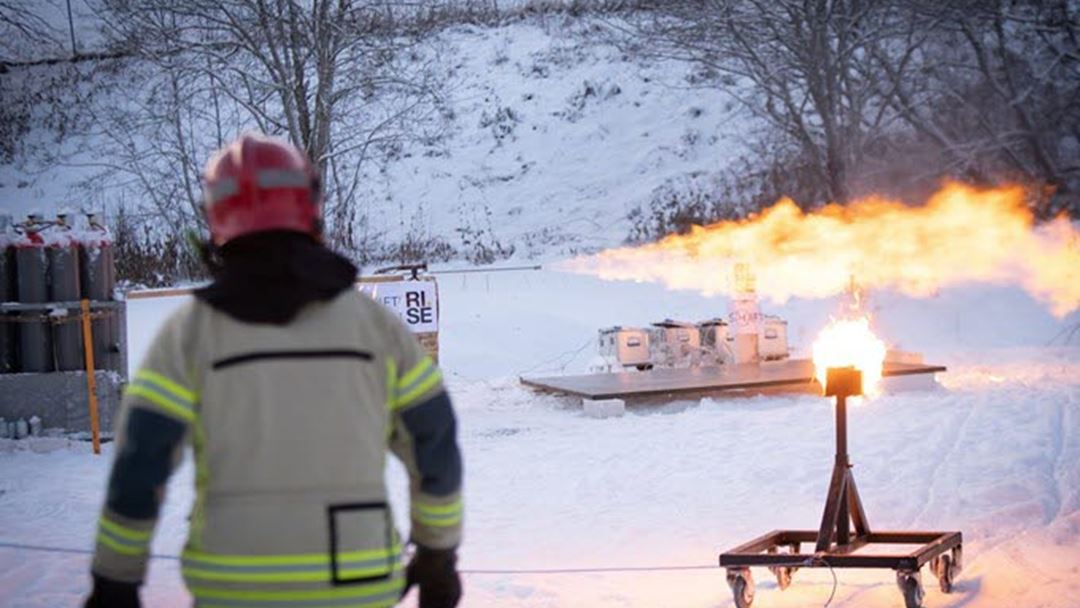
Wrapping up the SH2IFT project
The final project report summarizes the findings of the KSP SH2IFT project, funded by the Research Council of Norway, several industry partners and Norwegian counties. The project has investigated several issues related to hydrogen safety and closed important knowledge gaps. Phenomena such as rapid phase transition (RPT) and boiling liquid expanding vapour explosion (BLEVE) are known safety hazards when it comes to handling of liquified gases, e.g., liquefied natural gas (LNG). These phenomena have been investigated both experimentally and by modelling for liquid hydrogen (LH2) in the SH2IFT project. RPT as a consequence of LH2 spills onto or into water is not found to be a major issue. Of three BLEVE tests performed with 1 cubic meter LH2 tanks exposed to an external fire, one failed catastrophically, with all tanks withstanding the exposure for at least one hour despite blocked safety valves. The time it took for the tank to rupture at pressures highly above the design pressure would be sufficient to evacuate the premises safely. Two other tanks did not experience this catastrophic rupture. Gaseous hydrogen jet fires have also been investigated both experimentally and by modelling and it is found that depending on external conditions, the hydrogen flame is almost invisible to the eye, and this may cause a safety hazard e.g., during a fire inside a tunnel. High heat loads were measured and modelled at the impact points of impinging jets. Public acceptance surveys suggest that knowledge on hydrogen is limited in the public and those who know more are less afraid of hydrogen.
The SH2IFT project shall increase competence within safety of hydrogen technology, especially focussing on consequences of handling and use of large volumes and within closed and semi-closed environments and in maritime transport.
Relevant aspects from the whole value chain from industry and authorities to end users/general public will be investigated, with special emphasis on the potential obstacles and bottlenecks for early implementation of hydrogen as fuel.
The project will both develop new models, perform large-scale fire and explosion experiments, and provide guidelines for use of hydrogen in industry and transport. Thus, the project will contribute to reduced green-house gas emissions and growth in existing and new Norwegian hydrogen industry.

Project partners, funding and sponsors
The SH2IFT project consists of six partners: SINTEF Industry (coordinator), SINTEF Energy Research, Norwegian University of Science and Technology, The Instiute of Transport Economics, RISE Fire Research and Christian Michelsen Research.
The project is funded by the Research Counsil of Norway (ENERGIX - 280964): The ENERGIX programme provides funding for research on renewable energy, efficient use of energy, energy systems and energy policy. The programme is key instrument in the implementation of Norways national RD & D strategy, Energi21, as well as achieving other energy policy objectives.
The SH2IFT project is sponsored by:
Statens Vegvesen, Jernbanedirektoratet, Direktoratet for samfunnssikkerhet og beredskap, Fylkeskommunene; Viken, Vestland, Møre & Romsdal, Trøndelag, Finnmark, Equinor, Shell, NASTA, Statkraft, Ariane, Air Liquide, Nye veier, Total and Safetech.
Contact:
Anders Ødegård
Senior Project Manager- Name
- Anders Ødegård
- Title
- Senior Project Manager
- Phone
- +47 94 35 65 95
- Department
- Sustainable Energy Technology
- Office
- Trondheim
- Company
- SINTEF AS
Thor Anders Aarhaug
Senior Research Scientist- Name
- Thor Anders Aarhaug
- Title
- Senior Research Scientist
- Phone
- +47 92 68 24 44
- Department
- Sustainable Energy Technology
- Office
- Trondheim
- Company
- SINTEF AS


